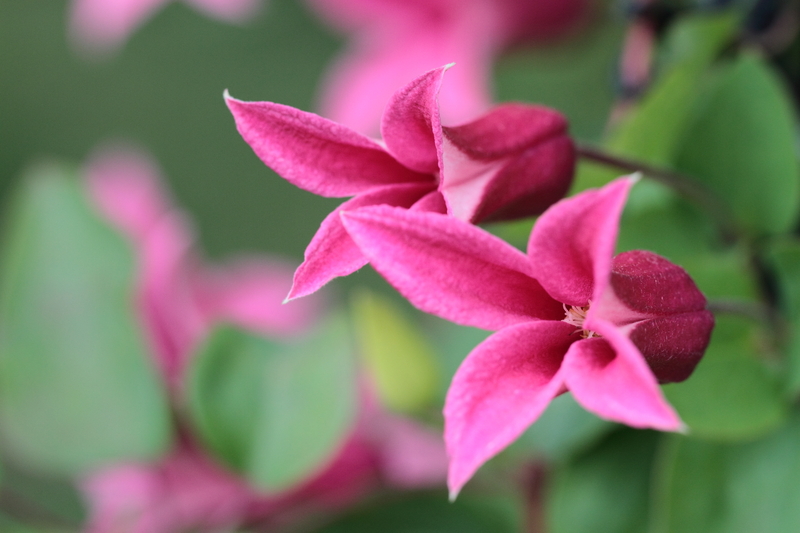Discover the Elegance of Evergreen Climbers for Shady Areas
Posted on 16/05/2025
Discover the Elegance of Evergreen Climbers for Shady Areas
Gardening enthusiasts often face the challenge of finding the perfect plant that thrives in shady conditions. Whether you're working with a small garden space or a sprawling estate, understanding how to utilize evergreen climbers can transform your green haven into a lush and thriving sanctuary. These versatile plants not only add a splash of color but also bring texture and life to those often overlooked shady corners. Get ready to explore a variety of options and tips for making the most of evergreen climbers in shade.
The Beauty and Benefits of Evergreen Climbers
Why choose evergreen climbers for your shaded areas? The answer lies in their unique ability to offer year-round interest, texture, and coverage. Unlike their deciduous counterparts, evergreen climbers retain their leaves throughout the year, providing continuous greenery.
Advantages of Evergreens in Shady Spots
- Low Maintenance: These plants generally require minimal care once established.
- Privacy Screening: Evergreen climbers can act as effective natural barriers.
- Soil Erosion Control: Their network of roots helps stabilize the soil.
- Wildlife Habitat: These plants attract beneficial insects and birds.
Let's dive into some of the finest evergreen climbers for shade that you can incorporate into your garden.

Top Evergreen Climbers for Shady Areas
1. Ivy (Hedera helix)
One of the most popular choices for shady areas, ivy offers a powerful punch with its dense foliage. English Ivy is not only resilient but also capable of growing up walls, covering trellises, and even acting as ground cover. Ensure proper pruning to manage its growth and prevent it from becoming too invasive.
2. Climbing Hydrangea (Hydrangea anomala petiolaris)
Known for its clinging vines and beautiful foliage, climbing hydrangea is an excellent choice for partial to full shade. In summer, this plant produces lovely white blossoms that stand out amid lush green leaves. Its peeling bark adds a layer of interest during winter months, making it an all-season performer.
3. Star Jasmine (Trachelospermum jasminoides)
Although typically grown in sunnier regions, star jasmine can adapt to shady conditions with adequate care. This plant is known for its fragrant white flowers and twining habit. Providing a sturdy support structure enhances its climbing potential and keeps it healthy across the years.
4. Clematis (Clematis armandii)
If you desire frangrance and lush foliage, evergreen clematis might be the perfect fit. With its thick, glossy leaves and perfumed white blooms in spring, this climber is ideal for trellises and fences. Preferring a spot where its roots are shaded but leaves are sun-kissed, clematis can be an eye-catching feature in any garden.
5. Evergreen Honeysuckle (Lonicera henryi)
Known for its rapid growth and vibrant greenery, evergreen honeysuckle is a favorite among gardeners looking to fill shady spaces. Its elegant tubular flowers add a splash of color and encourage pollinators to visit, while the twining vines adapt well both horizontally and vertically.
Caring for Evergreen Climbers in Shade
Successful cultivation of evergreen climbers in low-light conditions requires understanding their basic needs:
Soil Conditions
The majority of evergreen climbers thrive in well-draining, fertile soil. Amending the soil with organic matter like compost enhances its structure and nutrient content, ensuring robust root development.
Water Requirements
While initial growth stages may demand more frequent watering, established climbers are moderately drought-resistant. Monitor soil moisture levels and provide deep watering during prolonged dry spells.
Pruning
Regular pruning is essential to maintain your climbers' shape, encourage growth, and prevent any invasive tendencies. Trim back dead or damaged branches in late winter or early spring before the new growth season begins.
Fertilizing
Incorporating a balanced, slow-release fertilizer during the growing season supports healthy foliage. Avoid over-fertilizing, as this can lead to excessive greenery with limited flowering.

Creative Design Ideas with Evergreen Climbers
Transforming a shady garden area into a serene escape involves strategic design and planting hints:
Vertical Gardening
Use climbers to maximize vertical spaces with pergolas, trellises, and arbors. This technique increases vertical interest and utilizes spaces that would otherwise remain barren.
Living Walls and Screens
Turn climbers into living partitions or screens to create private areas within the garden. These natural green walls also act as stunning backdrops for seating or display sections.
Ground Cover
Let climbers drape over retaining walls and garden edges or cover bare patches for consistent coverage and visual depth. This not only beautifies but also suppresses weed growth.
Conclusion: Embark on Your Gardening Journey
Finding the right evergreen climbing plants for shaded areas is a fulfilling endeavor that can transform any seemingly dull space into a vibrant tapestry of texture and color. With diligent care and creativity, your garden can host an ever-evolving landscape even in the dimmest corners. So, embrace the challenge, experiment with various climbers, and enjoy the elegance and resilience that evergreen climbers bring to your outdoor oasis.
Remember, the key to gardening success in shaded areas is patience and passion. Happy planting!

